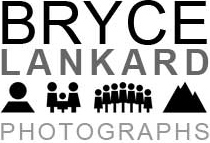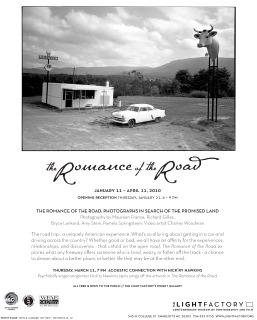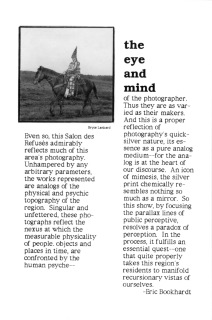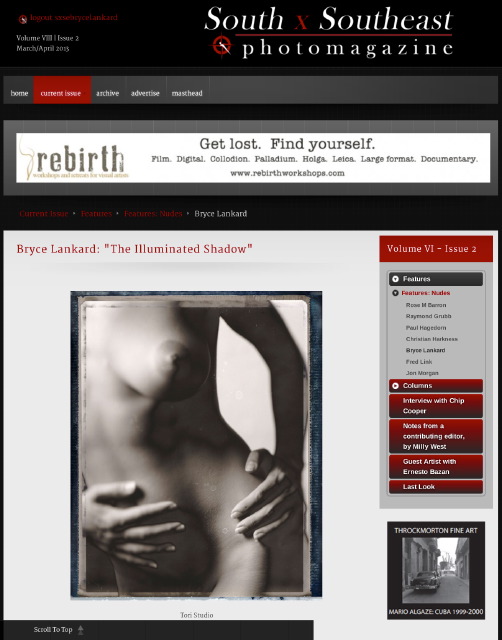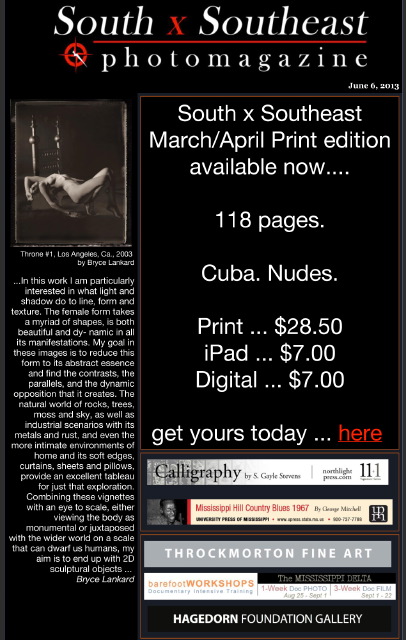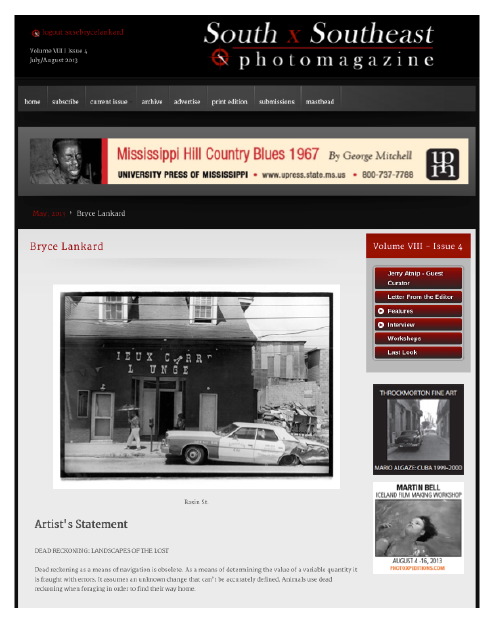“Nasher exhibit explores complexities of the Piedmont” -the Chronicle
By Abbey Milwicz | 09/05/2018
With fall colors rolling in and pumpkins around every corner, leaf peepers from across the country will head to North Carolina's Piedmont to marvel at the extraordinary transformation of the countryside. This Piedmont region – from Charlotte to Raleigh – will celebrate the glorious southeastern American feats of nature.
"Across County Lines: Contemporary Photography from the Piedmont" will be featured in the Nasher Museum of Art from Oct. 4 to Feb 10. As a culmination of 39 artists' work and dedication to the people of North Carolina's Piedmont and expressing 45 years of culture, this exhibition aims to present the remarkable intimacies of everyday life to viewers. The exhibition opening will take place Oct. 6 with refreshments and live music.
"The subject matter includes everything from portraiture to landscape, still life, politics, gender and identity issues, activism, immigration, Americana, abstraction and both local and foreign current events." wrote Molly Boarati, assistant curator for the Nasher Museum of Art, in an email. "Hopefully there is something in the exhibition that speaks to all students as individuals."
Passion and persistence manifest themselves through each artist's work. For many, their work represents a piece of their own story as well. Kennedi Carter, a featured artist and Piedmont resident, welcomes the opportunity to represent her community and the marginalization it experiences.
"This is the only place that I truly know," Carter said. " In photojournalism and fine art, or really any type of art in general, you want to tell stories and other people's narratives – you need to be able to connect with that story. You're not just telling someone else's story, you're telling your story too. The Piedmont region is what I connect to and what I know – it's where my story is."
The diversity in the artwork reflects the complexity of the region and the artists. Artist Titus Heagins, a Duke alumnus and Piedmont resident, aims to capture individuals as part of their own complex story which applauds diversity.
"So essentially what I would like people to come away with is the idea that the greatness of America, the potential of America, comes from all backgrounds: socially, racially, economically, politically, and we need to think about that when we start giving out the resources of this country and making sure all people get access," Heagins said. "Photography is about capturing an instant. It's very brief. I think that the important thing is, because of the iconography that’s within the image, people can glean information about what the photograph is about or what the story is about."
For Boarati, the excitement from working with such a diverse group of artists stems from their influence on each other.
To experienced older artists, working with the younger artists they inspired speaks to the support this community provides. The culmination of art forms and perspectives offers a unique view of the range in perspective.
"I think the range [of years] contributes more examples of analogue photographs, in addition to the more ubiquitous digital photographs today. The older photographs give a glimpse of the past, before undergraduate viewers were born, and provide a sense of what photography from the region looked like a few decades ago," Boarati wrote in an email.
Older photographs give a glimpse into the rich history and tradition of the region and contribute valuable insight into the growth and lack thereof. Photography provides the perspective to try and see beyond difference and into the complex reality of the community.
Heagins’ work will feature images from the Durham community spanning 15 to 18 years. He is one of many to offer not only the glimpse into a rapidly changing community, but also the perspective to connect the past to the present.
"I believe that what my goal is is to visually confront people who may never encounter – or at least may encounter under different circumstances – people of otherness so that they can consider their humanity and understand that we're all part of this world," Heagins said.
With a broad expanse of artwork showcased at the exhibition and an array of unique perspectives showcasing a variety of realities, "Across County Lines" allows the community to tell its story.
"A lot of the time the only people telling [the] narratives are people that can’t relate to it or it's just not their story – they’re just trying to project what they see visually or promoting ideas that they've encountered through media,” Carter said. "It's important to be able to control the narrative and that's something I'm trying to do."
DRAWN TO WATER featured in the summer 2016 issue of Southern Cultures Magazine. Published by the University of North Carolina Press for the Center for the Study of the American South.
I am so proud to have been included in DIFFUSION X, the tenth anniversary of the publication dedicated to artfully crafted photography. The passion project of my friend Blue Mitchell, it is truly a love letter to the crafters of photography.
TIME, PLACE AND ETERNITY: Flannery O'Conner and the Craft of Photography at Slow Exposures.
LENSCRATCH 10/2014 by Aline Smithson.
One of the highlights of the SlowExposures Festival was the Posse’s exhibition, Time, Place, and Eternity: Flannery O’Connor and the Craft of Photography. The exhibition was constructed in Christine Curry’s horse barn as part of the Friday night soiree held at her home to celebrate the ShowExposures Festival. We arrived just as the sun was setting and in the distance was a stately home surrounded by big trees filled with strings of light. After picking up a cocktail, we made our way to the horse barn where the remarkable collective, The Posse, consisting of some of the most innovative and creative Southern photographers: Anne Berry, Ann George, Bryce Lankard, Lori Vrba, and S. Gayle Stevens, had crafted one of the most interesting and innovative exhibitions I’ve seen in a long while. With hay on the floor, we made our way through the horse stalls, reading Flannery O’Connor quotes and enjoying the unique approach to crafting, hanging, and presenting photographs. Dennis Kiel was an honorary Posse member, supporting and assisting with the exhibition. The group arrived in their own RV, setting up camp next to the barn. Needless to say, they had an amazing weekend!
THE BODY PHOTOGRAPHIC is not an exhibition that fosters a cause or explores an agenda. It is not singularly political, psychoanalytic, or feminist. As an exhibition, it is assembled to operate as a spectacle, with work that covers a wide range of interests: the conditions of heterosexual and homo-erotic desire, confrontation with the stereotypes of identity, and the formal exploration of the body as an inexhaustible source of beauty and mystery.
Though there are many renowned photographers missing from the exhibition, the line-up of artists includes a mix of little known and internationally recognized work which touches many aspects of bodily mortality, from Bryce Lankard's "Home Birth Series" to work by Andres Serrano which has alarmed the critics of the New York Times and Washington politicians. Both Lankard's documentary photos, which freeze the frenzied perspectives of midwifery in frontal views displaying a fecund bulging woman attended by a crowd of people focused on her labor and conception, and "(Death by Drowning III)," 1992, from Serrano's terrifying, yet seductively compelling "Morgue Series," testify to how strong an appetite there is for subjects that "border on the unacceptable."
CAC curator, Lew Thomas- from the foreward
A possible outcome of this sort of thing is explored in Bryce Lankard's series documenting "Home Birth" and midwifery. A familiar French Quarter figure is seen mostly naked and in labor, and then in the messy if miraculous process of giving birth to a big, healthy baby. This series could almost be a page from our frontier past, but for the telltale touches that orient it in our contemporary bohemia -- a stirring, even startling document.
"The Graphic and Photographic" D. Eric Bookhardt, Gambit Weekly
The Romance of the Road: Photographs in Search of the Promised Land- Light Factory
Whether good or bad, we all have an affinity for the experiences, the relationships, and the discoveries-that unfold on the open road. The Romance of the Road explores what any freeway offers someone who is tired, weary, or fallen off the track- a chance to dream about a better place, or better life that may be at the other end. Dennis Kiel, curator
"Beginning with short trips through North Carolina, I tried to go out with open eyes and an open mind-knowing full well that my impressions of my state were like that of having read a good book, leaving much to the imagination. I wanted to fill in the blanks, and make that book into my movie. Using my camera as a passport into the unknown, I encountered scenes that both awed and shocked me. Throughout it all I tried to bring a wide-eyed sense of wonder, optimistic but critical."- Bryce Lankard
the 'Land of Dreams'
The Herald-Sun, Blue Greenberg
Bryce Lankard's photographs are about a place that was. For 20 years, Lankard has looked at his beloved pre-Katrina New Orleans and celebrates it, warts and all.
In these days of camera phones where the unthinkable is shot and transmitted by amateurs, Lankard's photographs are not of the moment; they are, however, documents that situate a place in its time. Carefully organized, crafted and true to detail, in this exhibit Lankard has chosen moments in the lives of people who made up the warp and woof of New Orleans. Unasked, is the question, "Do we really want to resurrect the New Orleans of the past with its poverty, its squalor and its slums hidden behind the fantasies of the tourists?" Can we have New Orleans back as the dream world of fun and make-believe, or has the dream disappeared forever when the truth about the Ninth Ward made the headlines?
Lankard's photographs are in stark black and white; they invite long looks, nostalgic memories, anger, shock and a longing for the fairy tale of Mardi Gras. There is the beautiful young boy dressed in his finery before the parade of the Money Wasters Social Aid and Pleasure Club; the musicians and strutters marching with the Golden Trumpets Social Aid and Pleasure Club and Native Americans on Super Sunday. And there are the masked Flambeaux and a Zulu member getting his make-up applied. In another part of town are young white girls dressed for the Mystic Krewe of St. Anne and the pre-teen princesses sitting in a circle waiting for the Krewe of Caesar to begin while the older male leaders of Caesar pose for pictures backstage before the ball.
There are also other photographs: the naked female entertainers and the women who bare their breasts, the street entertainers, a kid playing a trombone as big as he is, a saxophone player in front of the Cabildo. And there is a homeless sleeper on Bourbon Street, two kids playing with a make-believe pistol and a toddler on a tricycle that has no front wheel.
Lankard has it all, the funeral parades, the above-ground cemetery and the church with its wall of offerings of limbs and crutches to a blessed saint. In his introduction to his catalogue, the artist describes New Orleans as "Graciousness and dissolution. Squalor and elegance. It is a city that knows how to live a life fully -- how easy it is to take one." That city is gone; that land of dreams is history.
BODIES OF WORK, Uptown Magazine
Photographing models with vintage Speed Graphic cameras using Polaroid positive-negative film, and manipulating the images on location, Lankard brings an artist’s touch to every stage of the process. He frames their bodies in layers of visual texture by solarizing the negatives – or prematurely exposing them to light during developing – scratching them and, back home, leaving air bubbles in the wet-scanning process.
Man Ray, the American-born artist who pushed lots of boundaries himself, photographed some of his nudes using solarization, but Lankard’s work adds different dimensions. His careful experiments produce an arresting tableau of sepia-like tone, timeless place and dreamy mood, as though the viewer were peering into the past, present and future all at once, a female figure the one constant.
Shadows are brought into light, lines unnaturally defined and parts of the women’s faces and bodies looking like negative images. In another twist of convention, Lankard often caught his subjects in dynamic tension rather than reclining, giving the shots a sense of motion.
Hannah Mitchell
BODIES OF WORK, Uptown Magazine, February 2010
Excellence in photojournalism at the Ackland Art Museum
Dangers of life by Douglas Vuncannon -NC INDY
...beyond the collegial bonds that connect the creators of these photographs, there's an urgent and discernable undercurrent linking almost all of the selected images. These photographers, if not all artists in their conception of the medium, have forgone the supposed comfort and predictability of the usual professional existence and made it their mission to traipse the globe. Their self-appointed task is to show the complacent denizens of North American and Western European countries that radically different realities exist in places that are out of sight and mind.
REGARDS SUR LA NOUVELLE ORLEANS
One of the ironies of photography is that presenting a moment arrested in time, stopping time, results (at least theoretically) in making that moment continue indefinitely. The rich heritage of photographing what has been called “America’s most interesting city” informs the inheritors of that tradition who work in the Crescent City today. And so the works by Bryce Lankard (and others) are paradoxically brand new and over one hundred and fifty years old.
John H. Lawrence, The Historic New Orleans Collection, curator
-REGARDS SUR LA NOUVELLE ORLEANS Ministry of Culture, Paris, France, 2007
NATIONAL DREAD, Times Picayune, Roger Green
“Bryce Lankard...whose photographs of landscapes and people--mostly taken in the South--underscore many nasty, tawdry, even grotesque, aspects of life in the U.S. of A. Conveying moral outrage that recalls the film ‘Easy Rider’, the artist’s black-and-white and color photos hold up a mirror, confronting the viewer with facts he knows to be true, but attributes to the folly of others, usually at a far remove. Lankard discovers and frames striking images that, beyond documenting mindlessness and excess, often reveal a betrayal of American values.”
"Seven Photographers" Louisiana State Archive. 8/2007
An archive is, on one level, a repository of memory. The legislative acts, land transactions, and acts of incorporation housed within this building "the quotidian markers of agencies, bureaus, and of lives" transcend a certain momentary official utility with the passage of time, and become the carriers of historical record. Whether these records are holographic or digital, they exist as neutral witnesses, awaiting a scholar's notice to hammer them into the context of understanding and "meaning."
So too do documentary-style photographs"made in the moment"transcend those moments when what they show passes into history. But it is often the photographer who, at the time of the photograph's creation, nudges and shapes the meaning of that fleeting experience, acting both as creator and interpreter. Accepting that the photographer has chosen to point out certain aspects of a person, place, event, or thing, provides the conduit for according accuracy (or at least veracity) to what the photograph is showing. To the degree that the photographer shows or hides his or her hand, we believe what we see.
The seven photographers whose work appears in this exhibition, approach their larger subject of New Orleans with both relish and diversity of vision. They show us the city at work, at rest, and at play through momentary episodes and timeless ones. And in the flip side of that relationship, it may be gauged from their images how their subjects affect them.
Aspects of musical performance and public celebration are central to images by Shannon Brinkman, Syndey Byrd, Barry Kaiser, and Bryce Lankard. In these pictures, the notions of work and play are often inseparable. Making the beaded and feathered suit worn by Syndey Byrd's Mardi Gras Indian was a labor of love, but wearing it is pure joy. And who but Professor Longhair, seen in Barry Kaiser's portrait, could be having such a good time while working? The answer may be found in Shannon Brinkman's Lisa Singing in the Rain, or in Bryce Lankard's paean to the flambeaux, bearers of light during the night parades of Mardi Gras.
John H. Lawrence-The Historic New Orleans Collection
SALON DES REFUSES, Gambit Weekly
“Bryce Lankard’s Acadian Mardi Gras scenes seemed like fragile fragments of a legendary lost world--which indeed they are.”
MOMENTS IN TIME, Gambit Weekly-Kandace Power Graves 2007
Bryce Lankard was living in New York when Hurricane Katrina hit. As he watched the storm wreak its devastation on the city he had once called home, his thoughts immediately turned to his many friends and fellow photographers who remained in the drowned city and how he could help them. The cause he has taken on is to unite New Orleans photographers in a cohesive unit and make them a commercial force as well as a vehicle for showcasing the city’s culture, past and present. Lankard hatched the idea of the traveling show while still in New York. The show illustrates the breadth of New Orleans culture, both pre- and post-Katrina. The selected photographs explore and reveal the city’s cultural identity beyond its tourist facade. Ultimately, the show can prevent New Orleans from being defined -- or re-defined -- by the catastrophic events that Katrina brought. “My personal vision was to give a broad and accurate portrait of what New Orleans is, including its blemishes, including ... all the things that make us distinctive.
Various articles in Tarragona, Spain on the "Moments in Time" exhibition.
FINE ART PHOTO NO.2
“the aim has been to show the broadest possible international selection. The photographers presented here come from Bulgaria, the Ukraine, Russia, Poland, the USA, France and Germany. To show how wide the spectrum of erotic photography is, this issue ranges from classic nudes in black and white to the highly individual techniques of Bryce Lankard.”
Rudi Hillenbrand, from the editor’s notes.
FINE ART PHOTO NO.2, neuss, germany, 2007
PASSION & DESIRE
“Beauty is a very relative category which is often used in a judgmental and abstract way, a concept moulded and defined by social conventions, styles and fashions. All the photographs collected here deal with passion and desire as the two main driving forces behind eroticism, but each in quite different ways. Besides the seemingly perfect erotic/athletic bodies by Bryce Lankard, you’ll find dreamy erotic portraits and nudes by Hedy Larisch.”
Martin Boelt, from the preface.
PASSION & DESIRE, edition skylight,switzerland. 2005
ANALOG-DIGITALE FUSION
Bryce Lankard is interested particularly in light and shade. Lankard’s photographic discoveries journey from mountains to rusting sheet metal in an old factory or the to the intimate home in which a woman, who stands at the window, throws a Myriad of forms and textures which form on the skin in their own universe and in each motion appear dynamically. The pictures of the series “The Illuminated Shadow” were taken with Polaroid films of the types 55 and 665. The characteristic tones of these two films was particularly important since it helps to also reproduce the plasticity of the skin of the female form, finding it’s edge somewhere as an adventure between light and shade. Lankard used a set of exposure techniques with silver-halide film material. With conventional technology the Polaroid material gives rather a smooth and creamy texture to the skin. In other pictures Lankard used the Sabattier effect (pseudo-Solarisation). An already exposed negative is vaguely after-exposed, which the tonal values partly tilt and particularly with color films to strong colors, which mix impressively from the negative and the positive. Some pictures, which were exposed even on the spot and worked on during the Shootings, are to be identified hardly still as photos in the traditional sense.
Henning Onken (translated from German)
ANALOG-DIGITALE FUSION,Mein Berlin, Berlin, Germany, 2005
Bryce Lankard: Art Unhinged- The Main Street Rag
Photographer Bryce Lankard in a charming Southern drawl says, "I have long been a huge Walker Percy fan."
In fact Lankard and the famed Southern author have much in common. Both Lankard and Percy graduated from the University of North Carolina at Chapel Hill. Both, as adults, were drawn to New Orleans, Louisiana because they adored the seductive and eccentric culture of what Lankard calls that "odd, idiosyncratic city." Lankard and Percy lived and worked for a time in New York City. And both love telling stories: Percy with his pen and Lankard with his camera.
"I aspire to do what Percy did as an author in my photographs," Lankard says. "Percy poses questions, questions about the perception of things. Philosophical questions."
Over the past fifteen years, Lankard's work has explored and sought to find meaning in the unhinged: stories of lives disrupted, such as in the aftermath of 9/11 and Hurricane Katrina. Things gone, as Lankard says, in the blink of an eye.
LCW: Two of your pre-Katrina photographs from Land of Dreams are published here: Two Kids on A Car and Basin Street.
BL: Both are emblematic of what I was trying to show. New Orleans was very poor and, yes, some people were living in squalor. But there was hope and a certain joy to life and living that was beautiful. These boys are playing in a junkyard, yet they are happy. They embrace the spirit of New Orleans. Basin Street reveals my love of New Orleans’ aesthetic of decay. The city is sub- tropical. Things peel and rot very quickly. Not a lot of money to keep things up. Yet literally that very street, Basin Street, is the birthplace of Jazz.
LCW: In terms of your 9/11 photographs, two images, Pigeon Man and Dalmatian, are perhaps good examples of how photography can freeze a moment and contain a story.
BL: I lived in New York City on 9/11, but I was in eastern Europe for a wedding. Ironically I photographed Pigeon Man at almost the exact moment the planes hit the towers, just before 3 o’clock in the afternoon in Poland. I remember. I even wrote it in my photo journal. I was walking back from touring Krakow. It was very quiet and not a lot of activity. When I came to the main square, I saw this guy feeding pigeons. They were all over him. But it was this oddly peaceful moment. A few minutes later, when I got back to the hotel, I realized what had happened. That is when the Europe trip ended for me. Of course I was stuck in Europe and had to go on with my trip because I had no choice, but everything after that, everything I saw touched my sense of disconnection, loss, and fear: from shooting the Jewish cemetery, which was beautiful yet haunting, to this Dalmatian left outside of a café, staring in the window waiting on his owner. He seemed all alone. It struck me. I felt alone too and was waiting: on news of loved ones and others. Yet like this dog I couldn’t come in, I had to stay where I was and wait.
LCW: Your nostalgia—a desire to hold, in your heart, to a time that has passed—is one of the things that makes your work unique and empathetic, for example your photograph Playground, China Lake.
BL: Many images from my Blink of an Eye deal with childhood or youth or summertime because they are things you think will last forever then—wham!—they’re gone. I just turned 50. I thought I would be young forever, now mortality is creeping up on me. I took the Playground image about twenty years ago. I was nostalgic even then. I was reflecting on my childhood, thinking about the passage of time: how time moves on, how we grow old. I went on a trip by myself to find the place I was born, a place I lived for only a few months before my parents moved to North Carolina. Suddenly I’m there, in a deserted town on the edge of Death Valley. There’s this empty playground in the middle of a cracked-earth desert. The houses were uninhabited. No more kids to play. This really affected me. I held on to the image and idea. So when 9/11 and Katrina happened, I wanted to explore and express it. Today I’m still exploring change, transition, and time passing. In Transience I continue to examine change, transition, movement through time, progressions—the sense of how a moment is so brief and never the same thing twice.
Lynda C. Ward
Bryce Lankard: Art Unhinged- The Main Street Rag
Fraction Magazine: Issue 5- The PhotoNOLA issue- David Bram
The Photographers:
I really enjoyed talking with all the photographers and seeing such a terrific range of work. The work I reviewed ran the gamut from good to superb. Based on the best work I saw during the review, I chose five photographers whose work is featured in this issue of Fraction, and we are thrilled to show these artists here.
Final Thoughts:
For me, PhotoNOLA has set the bar for how a review should run, and every
other review that I do, whether as an artist or a reviewer, will be judged against this experience. I think PhotoNOLA is destined to become the review to attend for several reasons, including the relatively low cost of attending, the high quality of reviewers, the city of New Orleans, and the professionalism of the New Orleans Photo Alliance. If they continue to run this event and organization as well as they do, they will be big. Very big.
